How many bees are there in a hive? And why should we bother counting?
There are a few reasons why beekeepers would want to get an estimate of the number of bees they have in a hive.
For some, it may just be curiosity that brought this question out of mind.
But for most beekeepers, there is a reason for knowing the number of bees in the hives. Here’s why experienced beekeepers keep track of their bees’ population.
How many Bees does the Average Hive have?
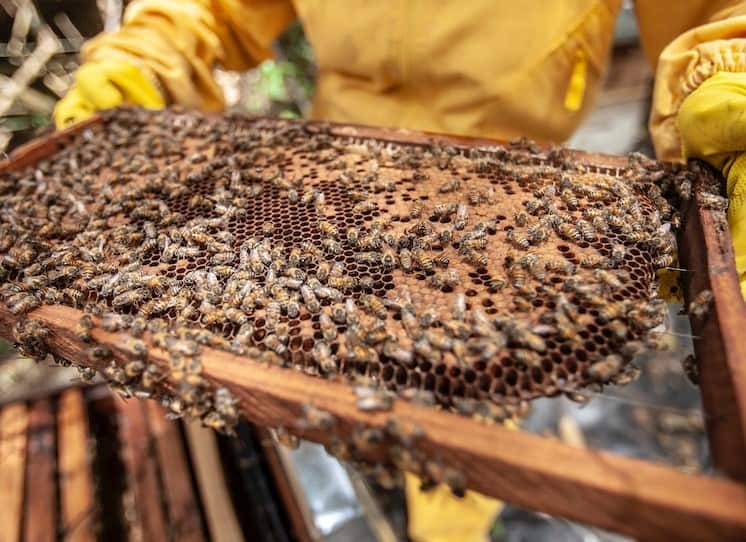
To determine the exact number of bees in a hive would be an impossibility, statistically speaking. Still, we can always get an estimate depending on the size of a single hive.
Let’s put aside the season, swarming incidents, and other factors for the purposes of this blog post.
Generally, an average honey bee hive would have a population of about 20,000 to 60,000 bees. This whole population is referred to as the colony.
Reigning in the colony is a single queen bee, with hundreds of drones and worker bees. These bees all live in the colony and work together for the survival of the colony.
On the other hand, bumblebee hives are smaller than honeybees. On average, it is populated with around 150-200 bees.
A bumble bee colony may contain as few as 50 bees in one nest and up to 500 bees.
How many Bees are in a 10-frame Hive?
Do the beekeepers really bother counting? But first, what is a 10-frame hive?
10-frame bee hive equipment has been the standard recommended in the beekeeping industry for over a decade. It has been the most used hive in the U.S. for so long now.
10-frame bee hives, like this one, are around 20 inches long and 16 inches wide. With this size, it can house more honey bees and has more space for the honey and brood.
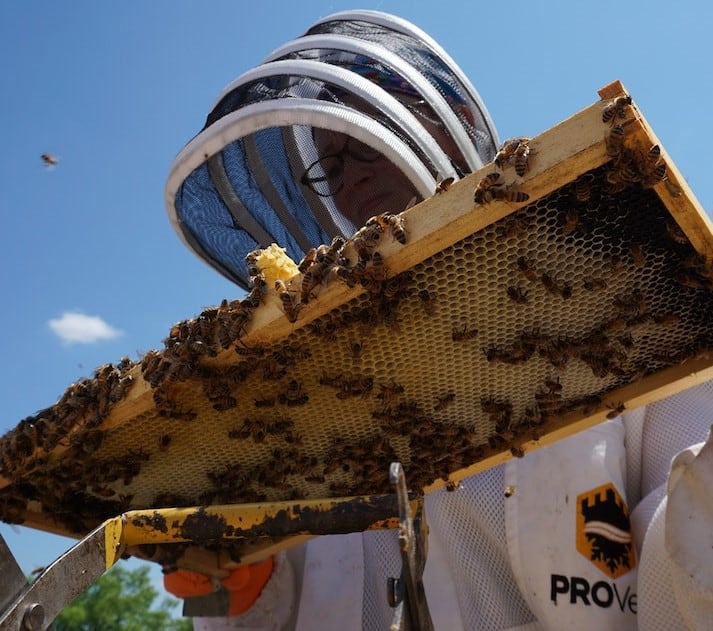
How do you Calculate the Number of Bees in a Hive?
There are several ways of coming up with an estimated number of honey bees in a hive. We share with you the two most common ones.
Weighing
One way to determine the number of bees in a hive is by weighing. It is believed that one honey bee weighs around 0.1 grams. Weighing the hive could actually give an estimate of the number of bees in the hive.
Take the populated hive and weigh it. Get the number and deduct from it the actual weight of the hive when empty. Divide the number by 0.1, and the answer would be the approximate number of bees you have in one hive.
More or less, a 1 kg weight would mean that there are around 10,000 bees.
Estimating the number of bees on a frame
Get a ruler and measure 1/10 of the frame. Count the number of bees in that area. Multiply that number by 10 to come up with an average number of bees on the whole side of the frame. Multiply the number by 2 to cover both sides of the frame.
Now that you have the number of bees per frame, simply multiply it by the number of frames you have in your hive. If you have a 10-frame hive, then your multiplier would be 10. It may not be the exact number of bees, but it is definitely close to it.
There may be other methods of counting honey bees. Some of these methods would have to take seasonal variations and the location of honey bees.
Still, the two methods above are the basics that any beekeeper can immediately resort to without much fuss and buzz.
Importance of Knowing How Many Honey Bees Are in Your Hive
As mentioned above, some people are interested in knowing the number of honey bees in a hive out of curiosity.
But for most beekeepers, there is more than just curiosity that keeps them on their toes just to know how many bees are in their hives.
Here are a few reasons why it is important to keep a count of your bees in your hive:
Determination of honey harvest
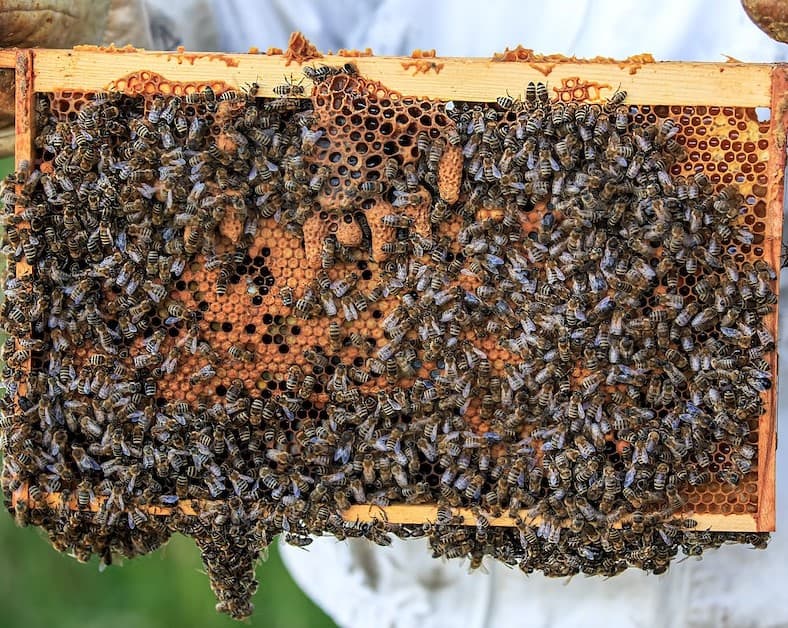
When a beekeeper has an estimate of the adult bees that are working in the hive, he can come up with an idea of the amount of honey that a colony can produce.
The more bees there are in a colony, the higher the honey production rate. The higher the production rate, the higher the yield.
It looks just like a factory. When there are lots of factory workers, there are more products produced. Of course, when there are fewer workers, there would be less produced. Pollination Services
Providing pollination services is one of the things that beekeepers also engage in to earn money from beekeeping. When these beekeepers engage in these services, it is important to keep track of how healthy a hive is when it comes to its population.
In a pollination service, farmers engage local beekeepers to provide effective pollinators (in this case, our six-legged friends) to help agricultural fields and farms to improve crop production and harvest. In the process of pollination, the bees are able to gather nectar and pollen to bring home as food for the whole honey bee colony.
Depending on the area of the fields to service, it is important to have an estimate of the number of bees in one colony to determine the pollination capacity. If a hive has a lesser population, beekeepers may need to add another hive to aid in pollination services.
Determination of colony health
Knowing the number of bees within a hive can help determine the health of the colony. When there are fewer bees than is expected of an average in a hive, it may be a sign that the bees have swarmed.
Or, it may be an indication that the queen in the colony does not lay eggs and is not producing enough worker bees. When such is the case, there would be fewer worker bees to help in honey production.
A thriving population is a sign of a healthy colony.
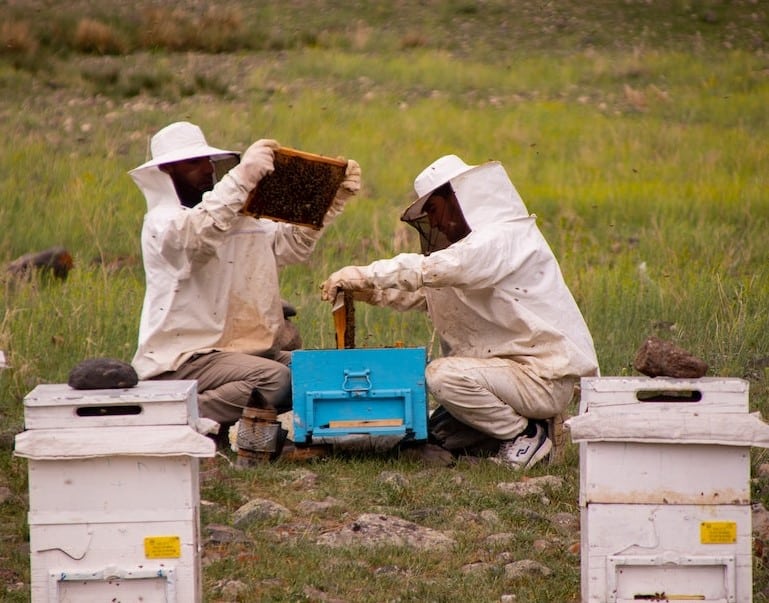
Beneficial in scientific studies
When a hive is under study scientifically, knowing the population in the hive (although it may not be statistically exact) can help in ensuring a correct conclusion under the circumstances.
It would provide a fair comparison for other studies as well, where the correct conclusion may be drawn. At the same time, further studies being undertaken by scientists interested in the topic could use the previous data. A little additional knowledge could help.
What Happens When the Hive is Full of Bees?
When the hive is over-populated, there wouldn’t be enough room for one queen bee to lay eggs. It would not be an easy task to get something more inside the hive, considering that a single queen bee is capable of laying more than 3,000 eggs per day during peak season.
When the hive is full of bees, a swarm would most likely happen. This is another reason why keeping track of the hive population is best.
Knowing that a hive is at full capacity could give a beekeeper a heads-up and take appropriate action, like splitting the hive before the honey bee colonies swarm on their own to create a new colony somewhere.
Remember, bees resort to swarming not because they just want to. Most often, they do so for their own survival.
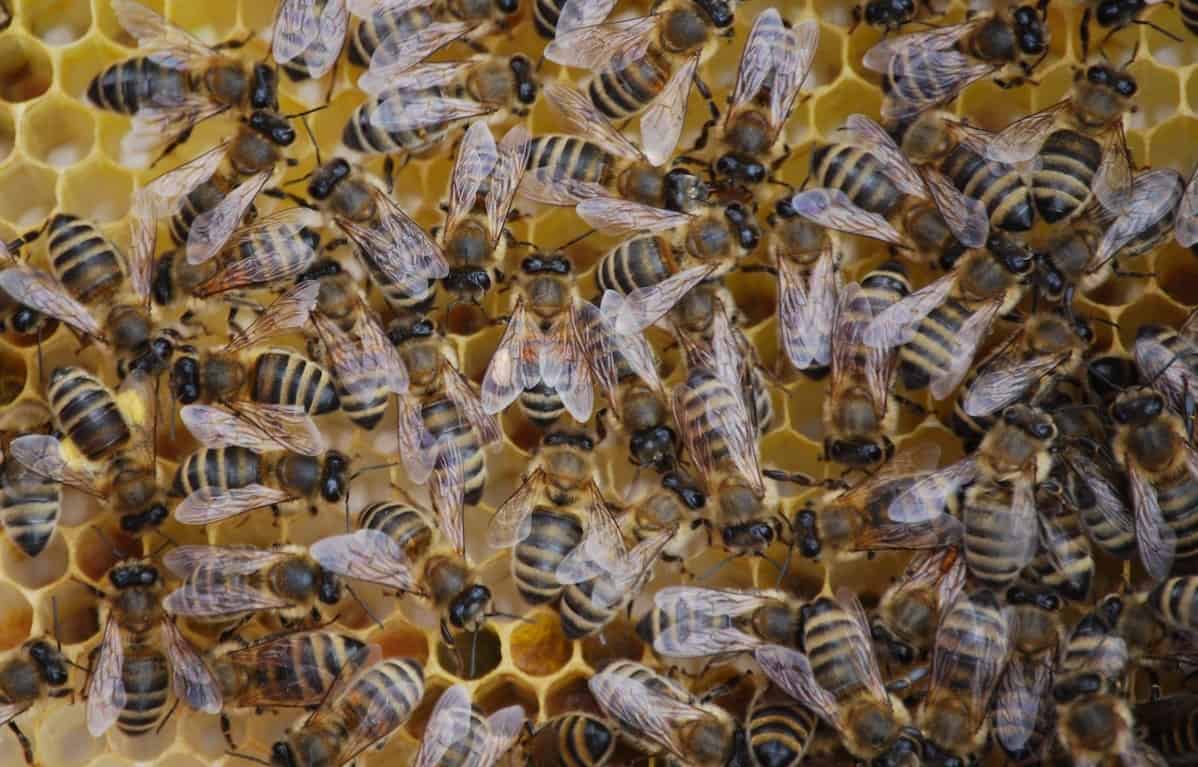
How did the male bee come to be called a drone?